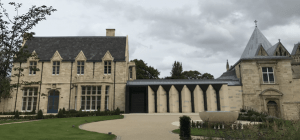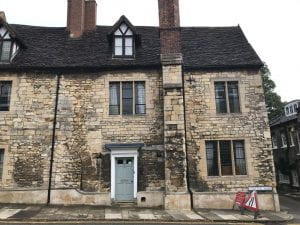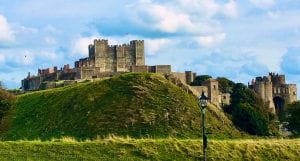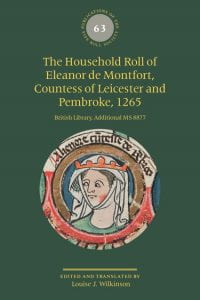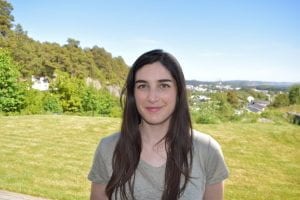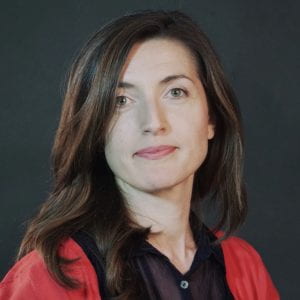In this blog, Claire Arrand, Special Collections Librarian, University of Lincoln, who is seconded to Lincoln Cathedral Library, provides us with a fascinating overview of the Minster Yard Project.
The Curator, Fern Dawson, recruited five Cathedral volunteers to undertake the research and, following a palaeography course, over the course of four years Angela Suttle, Joan Panton, Jonathan Joy, Lynne Green and Ros Mole sifted, transcribed and collated information to be used in the exhibition.
The initial trawl was undertaken with 16-19th century leases of properties in Minster Yard, Priorygate, Pottergate, Eastgate and Greestone Place searching for residents and their subsequent wills. The researchers met regularly with Carol Bennett (Interpretation Officer) to hand over their findings, which were added to the wealth of detail about the residents, including Katherine Swynford (c.1350-1403), William Byrd (c.1540-1623), George Boole (1815-1864), school mistresses and masters, choristers, illegitimate children, an ironmonger and maltster, a dancing master, solicitors, doctors, knights of the realm, MPs, artists, clergy and their families , army officers, bakers, a printer and a potter.
Sources such as wills and family letters tell stories of thefts, illegitimacy and murder.
Each volunteer tackled the research differently but regular and frequent trips were made to Lincolnshire Archives to record information found in thousands of Dean and Chapter documents, leases, wills, inventories, census, street directories, letters, business documents, maps, biographies and books about Lincoln.
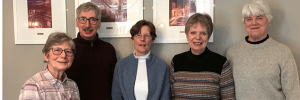
Without their input this fascinating insight into the people who lived in and around the Cathedral would not have been unearthed and enjoyed by visitors. The Cathedral is indebted to Angela, Joan, Jonathan, Lynne and Ros who must be congratulated for providing the text below, highlighting the treasures held in Lincolnshire Archives and revealing possibilities for future research for the University of Lincoln and other researchers.
Examples:
3 Priory Gate (currently the Cathedral’s Works Department)
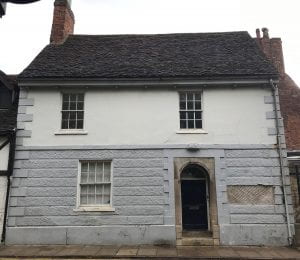
This building is currently the administrative office of the Works Department of the Cathedral. A date on the outside of the present building states it was built in 1695 but in 1649 it was known as The Elephant Inn and divided into dwellings. This earlier property seems to date back to 1566 and occupants of a variety of occupations lived there: a tailor in 1566 (see Bij/3/16 f.138), a yeoman in 1604, a doctor of physic in 1626, a gentleman in 1726, a soldier in 1732, in 1812 it became 3 separate dwellings until 1851 when a carpenter lived there until 1888. In the late 19th century and early 20th century it was occupied by the Cathedral Clerks of Works, including Robert S. Godfrey 1918 – 1953. A memorial to Mr Godfrey CBE MA is on the wall in the Cloister and states he ‘served the Cathedral as a Plumber and later Clerk of the Fabric to whose inventive genius and skill the preservation of the Minster from collapse and ruin in 1921 was mainly due.
Memorial to R. S. Godfrey, Clerk of Works in Cathedral Cloister, south wall.
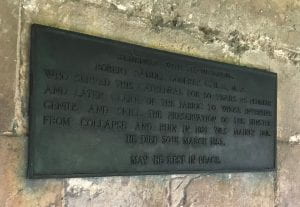
12 Minster Yard / Graveley Place
Jane (sometimes known as Joan) Duckett was a female servant in the household of Robert Swan according to the 1841 census when her father was a blacksmith. Jane married the jeweller James Usher, who was the son of a dyer. Their son James Ward Usher continued to work in the jeweller’s shop after his father died. He made a fortune from souvenir items decorated with figures of the Lincoln Imp. On his death he left money for the building of the Usher Gallery to house his own collection of clocks, porcelain and portrait miniatures, which he gifted to the City of Lincoln.
The Usher Gallery rotates this huge collection, including a golden Lincoln Imp tie pin, as well as a portrait of James Ward Usher. The image below has been supplied courtesy of Jim Newton, verger (and photographer) at Lincoln Cathedral.

1A Vicars Court (gatehouse)
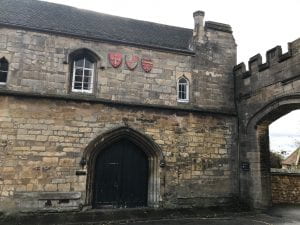
William Hilton was a scenery and portrait painter, who did occasional painting for the Cathedral. Lincolnshire Archives holds fabric accounts detailing small payments (see D & C BJ/1/17). His son William painted large canvases in the grand manner, portraying great moments in history or the Bible and was a keeper to the Royal Academy. His sister Harriet married the landscape painter Peter de Wint, and all three owned a house in Lincoln. A cenotaph in the Cathedral’s north transept dedicated to their memory has renditions of paintings by both artists carved in stone.
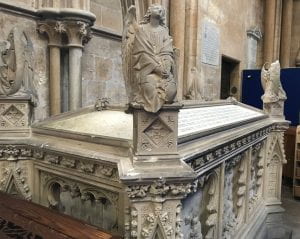
Please visit Lincoln Cathedral for the latest update on the exhibition opening date and Lincolnshire Archives to view the records mentioned above. Please also visit the Usher Gallery, Art at The Collection. See also Lincoln Civic Trust’s The survey of ancient houses in Lincoln series.
